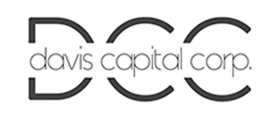Tim Davis
, Certified Financial Fiduciary, Retirement Income Certified Professional
Davis Capital Corp
Understanding the Differences Between 401(k) and 403(b) Retirement Plans
Retirement plans play a crucial role in ensuring long-term financial security for many individuals. Understanding these plans can be tricky, especially with the myriad of options available. Two common employer-sponsored retirement plans are the 401(k) and 403(b). While they share some similarities, they cater to different types of employees and have some key differences. Let's dive into these distinctions and help you understand the benefits and limitations of these two plans.
Basics of 401(k) and 403(b) Retirement Plans
401(k) and 403(b) plans are defined contribution plans, meaning employees make contributions from their wages, often matched by employer contributions up to a certain limit. Contributions are made pre-tax, reducing taxable income and allowing for potential tax-deferred growth.
Withdrawals from these plans can typically occur once the account holder reaches the age of 59 ½. Early withdrawals may be subject to taxes and penalties depending on the circumstances. Contribution limits apply to each plan, with maximum annual contributions outlined yearly. Catch-up contributions are allowed for those over 50 who wish to add more to their accounts.
401(k) Retirement Plans: For-Profit Companies
401(k) plans are designed for employees of for-profit companies. These plans can vary between employers in terms of investment options and administration. Common investment choices within 401(k) plans include mutual funds, stocks, and bonds. Plan participants may pay management fees associated with the administration of the program.
Employers may offer matching contributions, incentivizing employees to save for retirement. Vesting schedules can also differ, impacting when employees fully own their employer's matching contributions.
403(b) Retirement Plans: Not-for-Profit Entities
403(b) plans cater to employees of not-for-profit entities like schools, hospitals, and religious organizations. The Employee Retirement Income Security Act (ERISA) may apply to certain 403(b) plans, providing additional oversight and protections.
One key difference is the standard investment options within 403(b) plans, which often include annuities and mutual funds. Administration costs for 403(b) plans can be lower than 401(k) plans. Long-term employees of not-for-profit organizations can benefit from the unique 15-year rule, allowing for additional contributions in special circumstances.
Whether you work for a for-profit or not-for-profit organization dictates the type of retirement account you will use.
Diversification and long-term planning are essential components of retirement savings. Investing in an array of assets helps spread risks and may lead to more secure returns. As retirement approaches, regularly reviewing and adjusting investments may ensure financial stability during retirement years.
Conclusion:
In summary, both 401(k) and 403(b) retirement plans offer employees tax-advantaged options to save for retirement, but they cater to different sectors and come with some distinct differences. Before opting for either program, carefully evaluate your employment circumstances, available investment options, and the potential benefits of each, seeking professional guidance as needed.
Contact a financial professional today if you need help understanding your employer-sponsored retirement plan!
Many people have learned about the power of using the Safe Money approach to reduce volatility. Our Safe Money Guide is in its 20th edition and is available for free.
It is an Instant Download. Here is a link to download our guide:
Safe Money Guide - Annuity.com

Tim Davis
Davis Capital Corp
Katy, Texas 77494
tim.davis@retirevillage.com
(281) 665-3133

Looking For Answers?
Download our Safe Money Guide and learn more about safe retirement options that can help you achieve your retirement goals safely - FREE!


